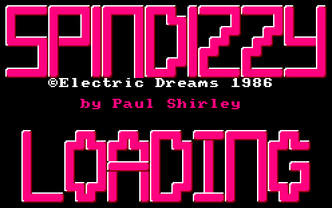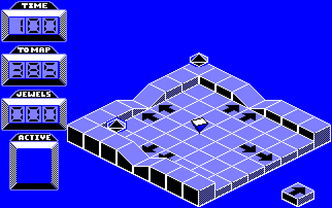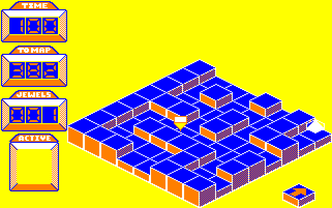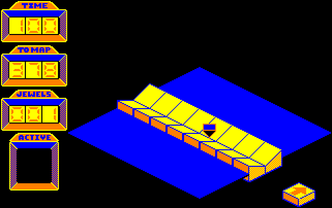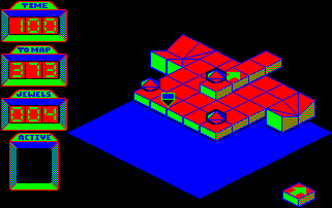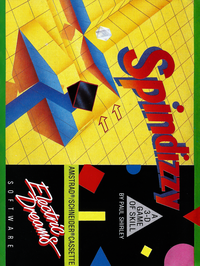Navigation:
Spindizzy Amstrad CPC
This game entry is not "published" yet and will not appear in game browers by default! (Edit and set publish = 1)
As we all know, working for the corporation is a hard life and the mission you are to be sent on this time is far from the usual run of the mill stuff. The back room boys have discovered a new dimension that contains a strange artificial world hanging in space. Of course, they want it mapped and as a Trainee Assistant Cartographer for Unknown Worlds, the job has fallen to you. Because of the Company's far from noble motivations (it's all government sponsered work you know), is money. The more time you spend out there the more money the company can claim.
The Remote Scout Craft you are given is an old fashioned Geographic Environmental Reconnaissance Land-Mapping Device, known as GERALD. The craft is expensive to maintain so your time is limited. If you do not move fast the mission will be terminated. The ships computer holds the initial radar map of the surface and your task is to explore each area, collecting energy in the form of jewels, for which you will be rewarded with extra time. Since this world is hung in the infinity of space, falling off is not a good idea. Should you lose or destroy your craft it will be re-created and beamed back to the last location visited, but this will cause an enormous power drain resulting in loss of valuable time.
So there you have it - do a good job and the rewards will be great, otherwise... well, you don't want to be a Trainee Assistant Cartographer all your life - do you? — Game Inlay
Spindizzy is an isometric computer game released for several 8-bit home computer formats in 1986 by Electric Dreams Software. It features action and puzzle game elements. Players must navigate a series of screens to explore a landscape suspended in a dimensional space. Development was headed by Paul Shirley, who drew inspiration from Ultimate Play The Game games that feature an isometric projection.
The game was successful in the United Kingdom and was well received by the video game press. Reviewers praised its visuals and design, but criticized its audio. Similarities were drawn to Marble Madness, which was released in arcades two years earlier. Spindizzy was followed by a 1990s sequel titled Spindizzy Worlds.
Gameplay
Spindizzy is an action and puzzle game played from an isometric perspective. Players can view the playing field from four different angles, and rotate between them. The game takes place in a fictional landscape of interconnected stages suspended in a dimensional space. The player controls a probe called a Gyroscopic Environmental Reconnaissance And Land-Mapping Device (GERALD), via keyboard commands or a joystick. The craft is able to transform—and modify its mobility as a result—between three configurations: a ball, an inverted square pyramid, and a gyroscope. Players navigate the probe through the stages to explore the world within a time limit. The time limit can be extended by collecting power jewels scattered through the world and is decreased by falling off a stage. Stages feature ramps, corridors, and other obstacles that hinder the player from quickly traversing them. The game ends when time expires or the world is completely explored.
Source:Wikipedia
